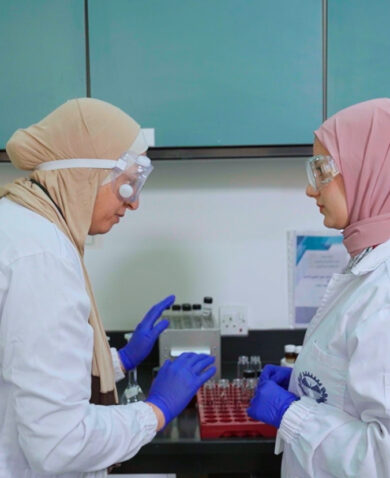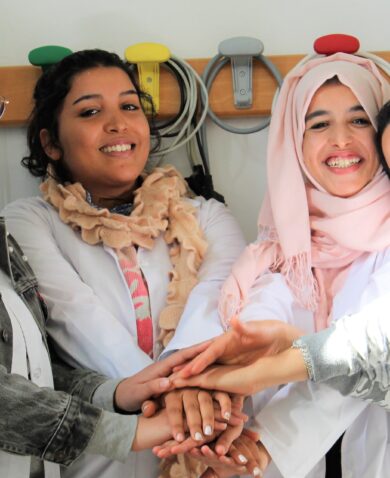A Look Inward
Our starting point was to conduct an organizational diversity and inclusion assessment to better understand our current state and readiness for diversity work. We hired an external consultant to examine our policies, procedures, and, importantly, our culture.
We asked for honest and candid feedback, from holding focus groups with different cross-sections of our workforce to surveying nearly 900 of our global employees. Our people answered tough questions like how included they feel on the job, if the work environment supports diversity and inclusion, what Chemonics does well to create an engaging and respectful workplace, and what Chemonics needs to do better.
We used the Intercultural Development Inventory as a tool to identify our stage of intercultural competence. The IDI provided the structure for understanding how we, as individuals and collectively as an organization, respond to difference.
Our assessment results surprised us. We were not as far along on the continuum as we thought or hoped we would be. We also realized that in our attempt to treat everyone equally, we may have overlooked the specific needs of diverse groups in our workforce. Like many others in the international development space, we were reminded that we too have our own blind spots that need to be openly acknowledged and addressed.
Through the assessment, we were provided insight into what we are already doing well and identified where we still need to bridge gaps. We understand that we need to do better and we have the courage to make changes. This has encouraged us to begin looking at things like the number of women and men working at each level of the organization and ensuring our processes support identifying and hiring talent that spans the spectrum of diversity.
While we have more work to do, we have also taken some important steps that will serve as a strong foundation for moving forward. For example, D&I is a component of our organizational global workforce strategy and we have a dedicated Diversity and Inclusion Core Council. Through our Honoring Our Differences program, we have implemented over 20 activities in the past year to share stories, build dialogue, and connect through an improved appreciation of our differences and similarities. And Chemonics hired a full-time corporate diversity and inclusion director, a role which I have the honor of serving in.
Time to Walk the Talk
The role of corporate diversity and inclusion director was created to guide our journey. I am working to collaboratively develop and implement a long-term D&I strategy that will accelerate our progress with the goal of becoming a model of diversity and inclusion within the international development sector. For our peer organizations that want to accompany us on this journey, below are my recommendations for where to start.
- Get the facts: Conduct an internal audit to understand the demographic diversity and perceptions of inclusion within your organization. You must know where you are starting from to plan where you are headed.
- Listen to what people have to say: Before creating a strategy, take time to listen and understand with an open mind. It is more important to truly understand the context than to have a nicely formatted document.
- Define your “why”: There is plenty of evidence that shows that being diverse and inclusive is both the right thing and the smart thing for companies to do. For it to be relevant for your organization, however, you need to identify how the case for D&I aligns to your mission and business strategy and supports the work you are already doing.
- Hire a diversity leader: We understand the need for technical expertise in our project work and that hiring the best people supports our success. The same goes for D&I. If you are committed to driving change, don’t make D&I an add-on to someone’s existing job. Hire someone with the right skills to lead and keep the conversation focused on D&I.
- Build engagement: Buy-in and support for D&I, like any other strategy, are essential for success. We all know leaders set the tone and at Chemonics, President and CEO Susi Mudge is championing this cause. But it doesn’t stop with leadership. Learn early who your internal and external stakeholders are and build engagement at all levels and in all directions. If everyone is not all in, think about who is being left out. Inclusion may start with “I” but is truly about “us.”
At Chemonics, we have set a starting point — one based on intentionality and commitment. Building a company-wide D&I program takes time. We are proud to say that we have begun our journey and are eagerly embarking on the road ahead. Will you join us?
























